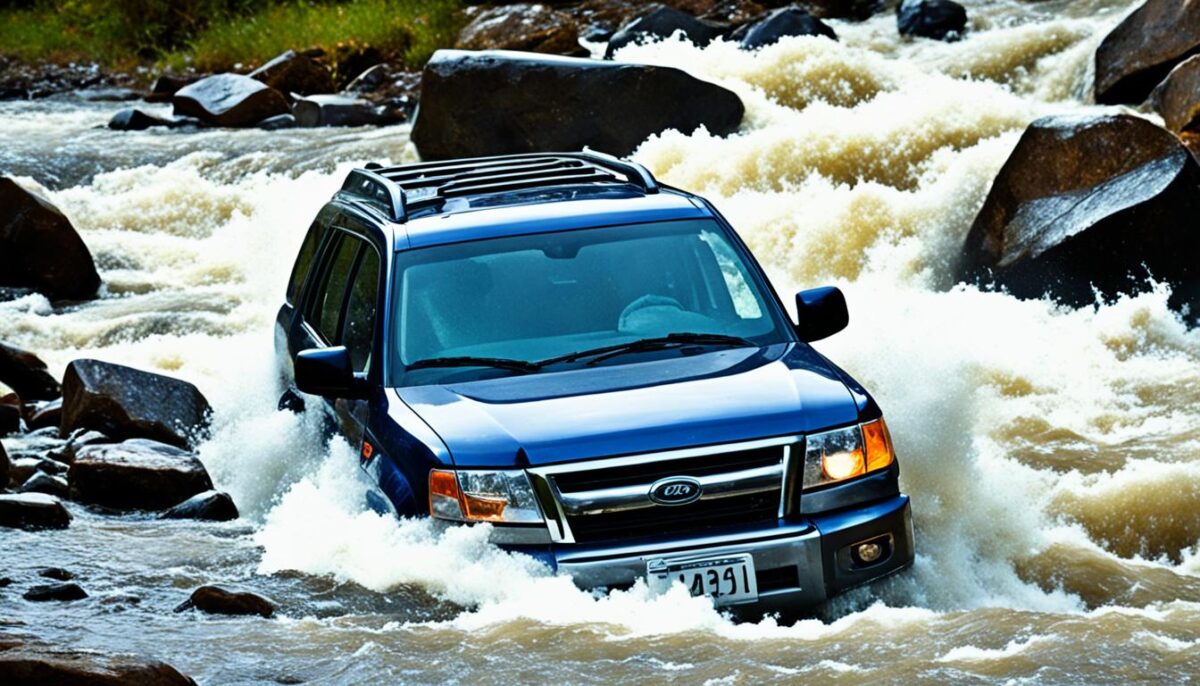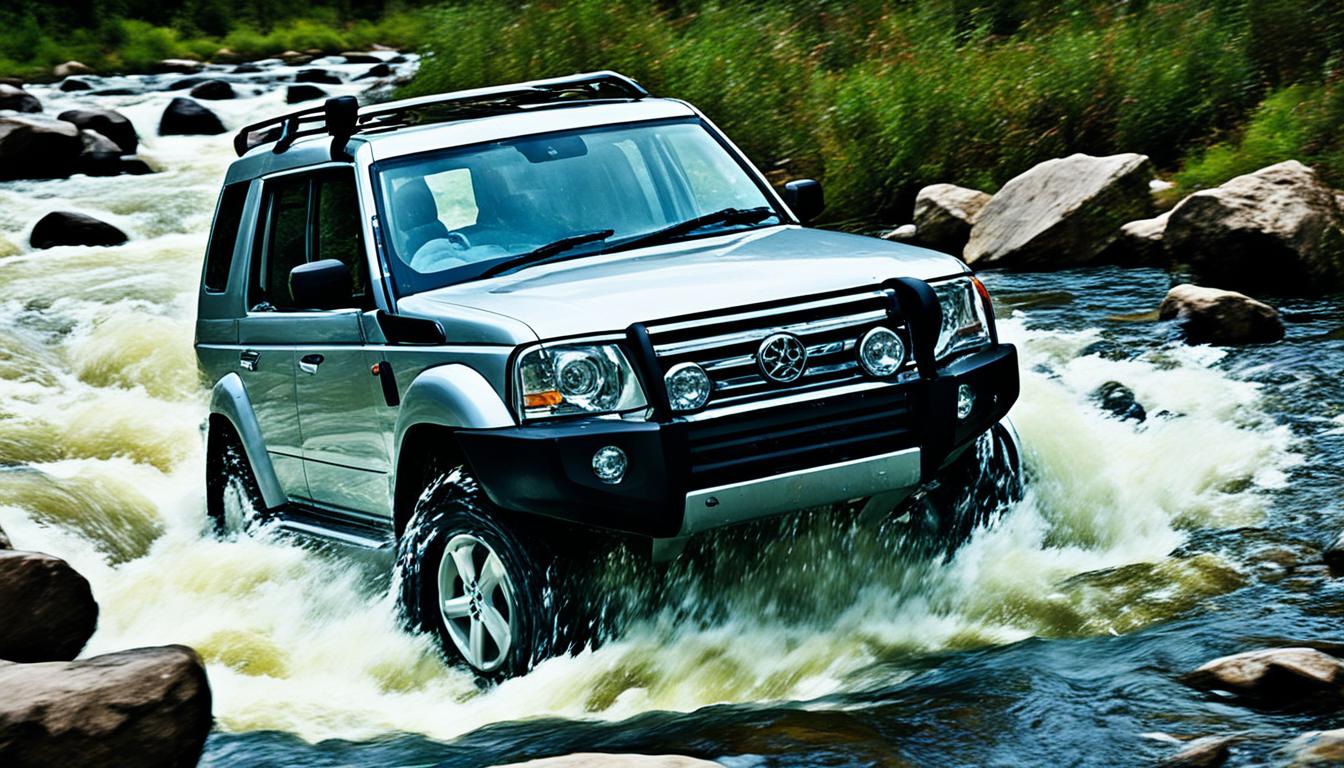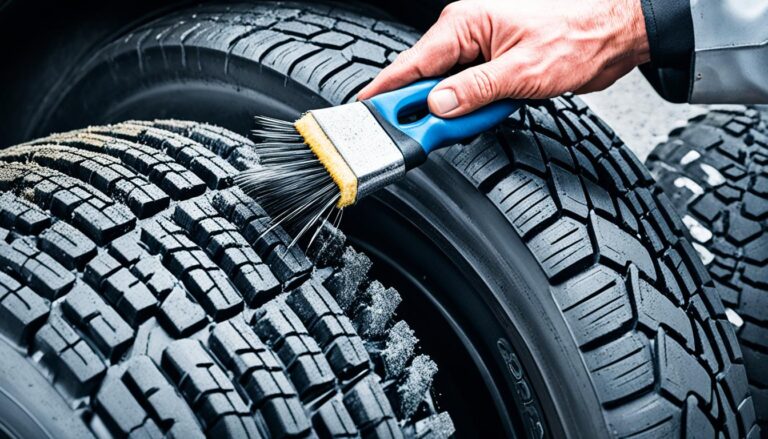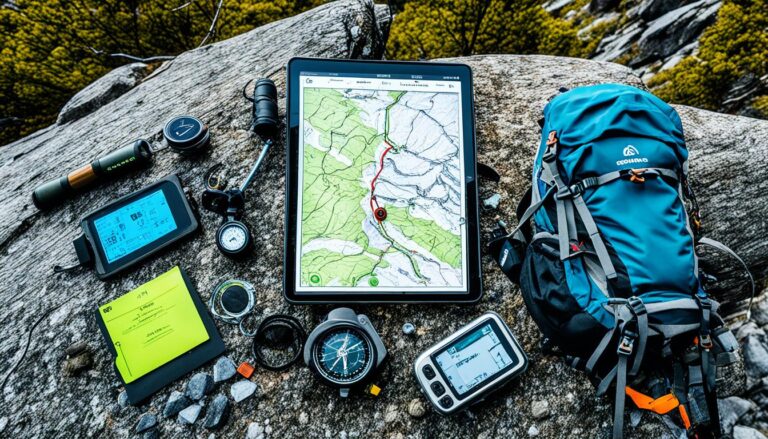How to Safely Navigate Water Crossings in Your 4×4
As adventure enthusiasts, we understand that navigating water crossings can be one of the more thrilling aspects of 4×4 navigation. However, it’s essential to recognize that these crossings also bring certain challenges, from hidden obstacles lurking beneath the surface to unpredictable current flows. In this section, we’ll share some vital water crossing tips that can help us approach these situations with confidence and care.
Prioritizing off-road safety is crucial for a successful and enjoyable adventure. Before we dive into the techniques and preparations necessary for safe water crossings, we must emphasize the importance of thorough research about specific crossing sites. Engaging with off-road communities and forums is also a fantastic way to share experiences and gather insights that can aid in our adventure preparation.
Understanding the Risks of Water Crossings
Water crossings can be thrilling adventures, but they also come with significant risks that we must take seriously. From hidden dangers lurking beneath the surface to rapidly changing weather conditions, understanding these risks can make the difference between a safe crossing and a perilous one.
Identifying Potential Hazards
During our adventures, we’ll encounter various potential hazards that can jeopardize our safety. These may include:
- Submerged rocks
- Deep holes
- Wildlife in the water
By being vigilant and cautious, we can minimize the risks of water crossings and protect ourselves from these dangers.
Assessing Water Levels and Current Strength
Effective water level assessment is crucial before proceeding with any crossing. We need to gauge how deep the water is and understand the current strength. Techniques such as:
- Using a stick or measuring tape to determine depth
- Observing the speed and flow of the water
These methods will provide valuable information that can impact our decision-making and overall safety during the crossing.
Weather Conditions and Their Impact
The weather can significantly influence water conditions and should never be overlooked. Sudden storms or changing temperatures can increase flow rates and create unexpected challenges. Key considerations include:
- Monitoring forecasts and alerts
- Recognizing visual indicators of weather changes
Staying aware of the weather impact on crossings is essential for ensuring our safety during any water crossing adventure.

Preparing Your 4×4 for Water Crossings
Embarking on a water crossing adventure with our 4×4 requires meticulous preparation to ensure we navigate safely through challenging conditions. By addressing essential modifications and checks, we can enhance our vehicle’s capability while also prioritizing our safety.
Essential Modifications and Upgrades
To optimize our 4×4 for water crossings, we should consider several vehicle modifications. First, installing a snorkel can significantly improve our vehicle’s air intake, allowing it to perform better in wet conditions. Additionally, lift kits can provide better ground clearance, while reinforced undercarriages protect critical components from potential damage. These upgrades ensure our vehicles are well-equipped to handle the rigors of crossing water.
Checking Your Vehicle’s Sealing and Ventilation
Proper sealing and ventilation are crucial to preventing water ingress into our 4×4. We must thoroughly inspect door seals, the hood, and any other potential entry points to ensure a tight fit. By confirming that our ventilation systems are clear and functioning, we can avoid water damage and maintain optimal performance during our adventures.
Gathering Safety Gear and Equipment
No water crossing is complete without the right safety gear for water crossings. We should prepare a comprehensive kit that includes recovery gear, such as tow straps and winches, flotation devices for emergencies, and communication tools to stay connected. By gathering these essential items, we can tackle any challenges that may arise, making our journey safer and more enjoyable.







